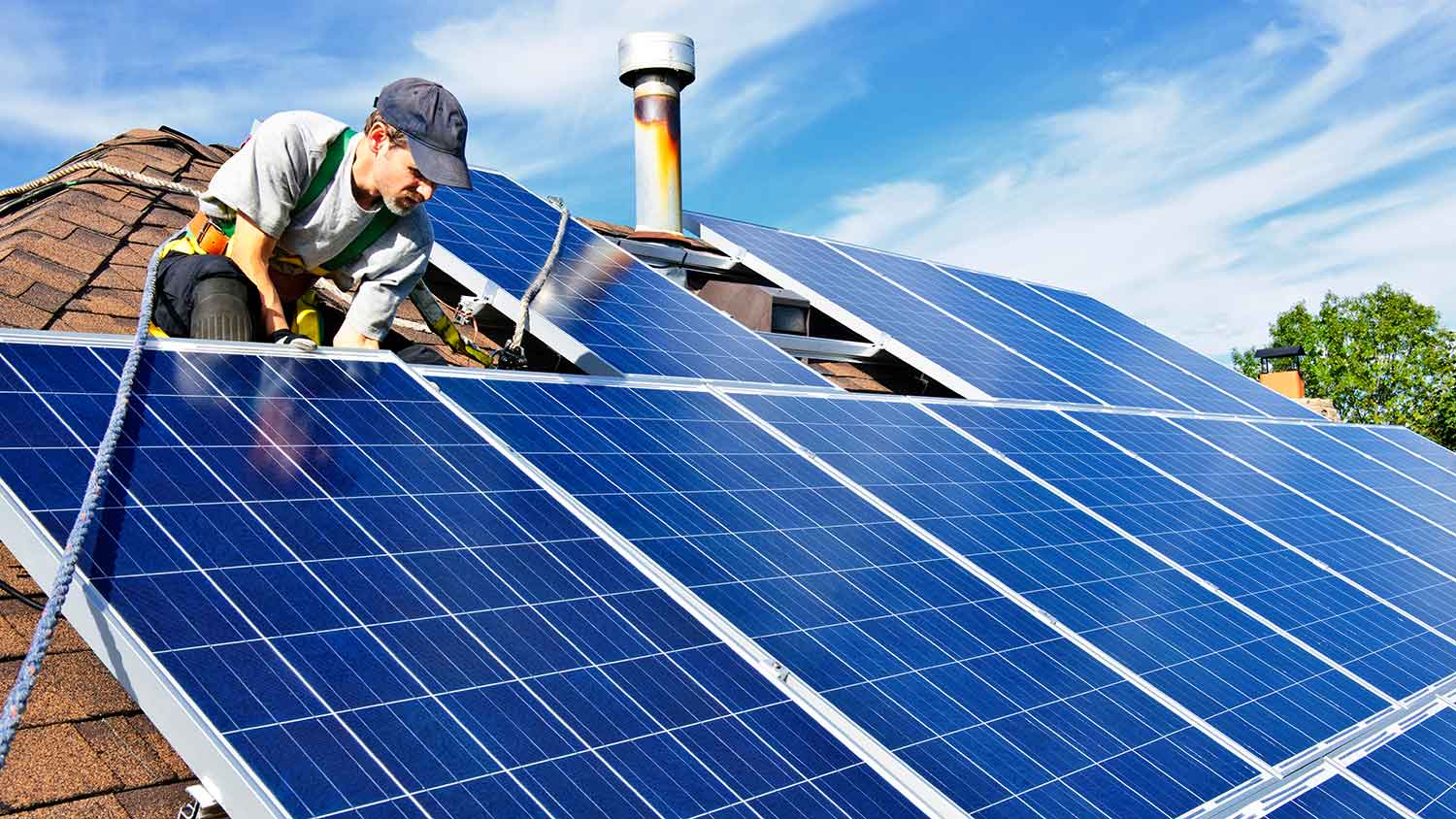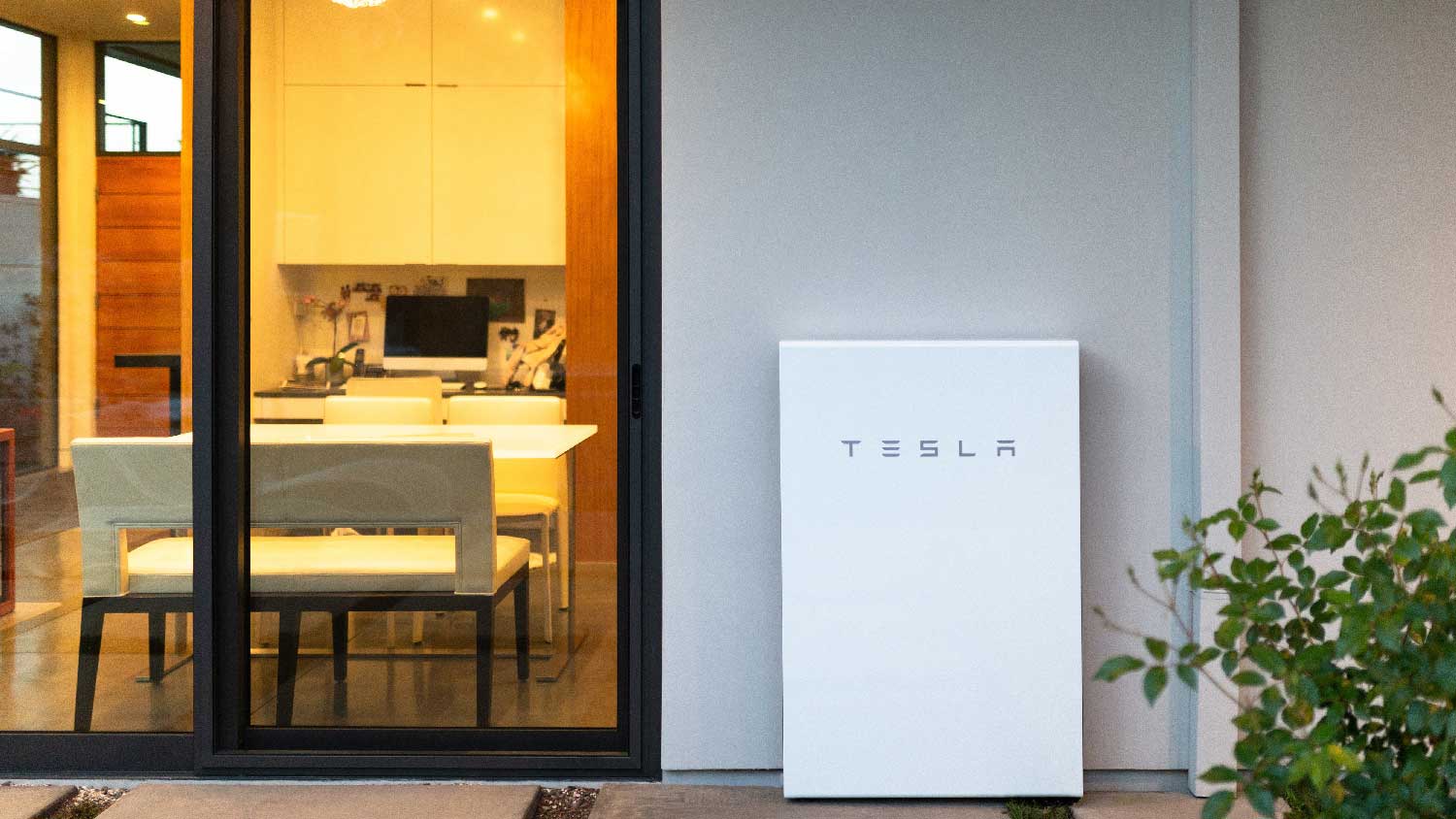
Solar battery costs depend on the size of your system, labor, and capacity. Learn how much you could pay for batteries for home solar systems.
Solar energy technology is a bright way to go green


Solar energy is electromagnetic radiation from the sun and a renewable resource that can reduce your electric bill.
In most solar panels, a silicon cell absorbs sunlight and generates an electrical current.
Residential solar panels use photovoltaic (PV) technology.
Power plants use concentrating solar-thermal power (CSP) technology.
As homeowners look toward renewable energy sources, solar energy systems are more common in residential homes. You’ve most likely seen solar panels up on a neighbor’s roof or expansive solar farms on the side of a highway. These all utilize solar energy, which can save you big bucks on your electric bills. Let’s look at what solar energy is, how solar panels work, and the pros and cons.
At its heart, solar energy is sunlight. More specifically, the term is used to describe the electromagnetic radiation that comes from the sun. This doesn’t just refer to the UV rays that have us slathering on more sunblock. By the time sunlight reaches the ground, it consists of 50% visible light, 45% infrared radiation, and even smaller amounts of UV and other types of electromagnetic radiation.
Solar energy technology can transform this electromagnetic radiation into energy we can use in our homes. Certain parts of the U.S. are more sunny, so some states are better suited for solar energy systems than others.
Two widely used types of solar energy include photovoltaic (PV) technology and concentrating solar-thermal power (CSP). PV is found in a standard solar panel that you would install at home, while CSP is primarily used in large power plants. They each work a little differently.

Photovoltaic solar panels create electricity through the use of tiny photovoltaic cells. These cells are made from a semiconductor material like silicon. When sunlight hits the panel, the cell absorbs the sunlight, and the semiconductor material creates a direct electrical current (known as DC power). This electricity passes through a solar inverter, which converts it into the alternating current (AC) electricity used inside your home. Components in the system include:
PV solar panel: Absorbs sunlight and creates DC electricity
Charge controller: Regulates the voltage
Battery: Stores excess power
Solar inverter: Converts DC electricity to AC electricity for your home
Though silicon—specifically crystalline silicon—is found in most residential solar panels on the market, some thin-film models use an alternative like cadmium telluride (CdTe) and copper indium gallium diselenide (CIGS). You can use either type of solar panel directly without a battery. Some homeowners install a battery to prevent power losses or maintain energy off the main electrical grid.
Concentrating solar-thermal power is not used in residential settings, but it is used at a large scale in power plants. CSP systems use mirrors that concentrate sunlight and reflect it onto a receiver. This reflected solar energy heats a high-temperature fluid inside the receiver. From there, the heat can spin a turbine or power an engine, which creates electricity.

There are three types of PV solar panels you can choose from. Monocrystalline and polycrystalline panels are the most popular in residential settings, while thin-film solar panels are used more in industrial settings. Each has a slightly different composition:
Monocrystalline solar panels: Each cell in a monocrystalline panel contains a single piece or wafer of crystalline silicon. This option is the most efficient and performs better in low-light conditions than other types.
Polycrystalline solar panels: Polycrystalline solar panels contain fragments of silicon rather than a single piece. This helps panels perform better in climates with high temperatures at a lower cost, but this form is less efficient.
Thin-film solar panels: Thin-film solar panel cells use layers of different semiconductor materials, such as copper indium gallium selenide (CIGS), cadmium telluride, or amorphous silicon. They perform well in low-light situations and high temperatures but require a lot of space.
If you’re choosing a solar energy system for your home, it’s best to consult a solar panel installer near you. Your pro can design the ideal solar panel configuration for your roof and install it correctly.
When considering solar panels, you’ll need to assess your roof's age, size, pitch, and shape. The trees shading your home will also impact whether rooftop solar panels are the best option. A solar panel installation pro can assess your roof and recommend the next steps.
When it comes to the transition to renewable energy, most homeowners ask one simple question: Are solar panels worth it? The answer isn’t so cut and dry. It’s a large up-front expense, but it pays off in six to 10 years. Here are some pros and cons of solar energy.
Solar panels can reduce your electric bill by $650 to $1,500 per year
This green source of energy reduces your reliance on fossil fuels
Most solar panels last 25 to 30 years and require maintenance
You can send excess energy back to your utility company for use in your community
Solar energy can reduce your reliance on the main power grid
Stored solar energy can serve as a backup during outages
Solar panels come with a high up-front cost
Installation is complicated, so you’ll need to hire a pro
Sunlight is variable, so not every area gets the same benefit
Solar panels can struggle in shady yards or high temperatures
Solar panels take up a lot of space and must face the right direction
Recycling options for solar panels are limited
From average costs to expert advice, get all the answers you need to get your job done.

Solar battery costs depend on the size of your system, labor, and capacity. Learn how much you could pay for batteries for home solar systems.

Discover the Tesla Powerwall installation cost, including average prices, cost factors, and tips to help homeowners budget and save on their Powerwall project.

There are a few factors to consider when it comes to solar panel repair costs. This guide breaks down the prices of solar panel removal, repair, and replacement.

Solar panels are low-maintenance but occasionally require some elbow grease. This guide will help you learn how often solar panel maintenance is required.

What is solar farming? Learn how solar farms work, types, pros and cons, and how this renewable energy boom can help you turn daylight into power.

Do solar panels damage roofs? We’re breaking down the different ways damage can occur post-installation and how to avoid issues.